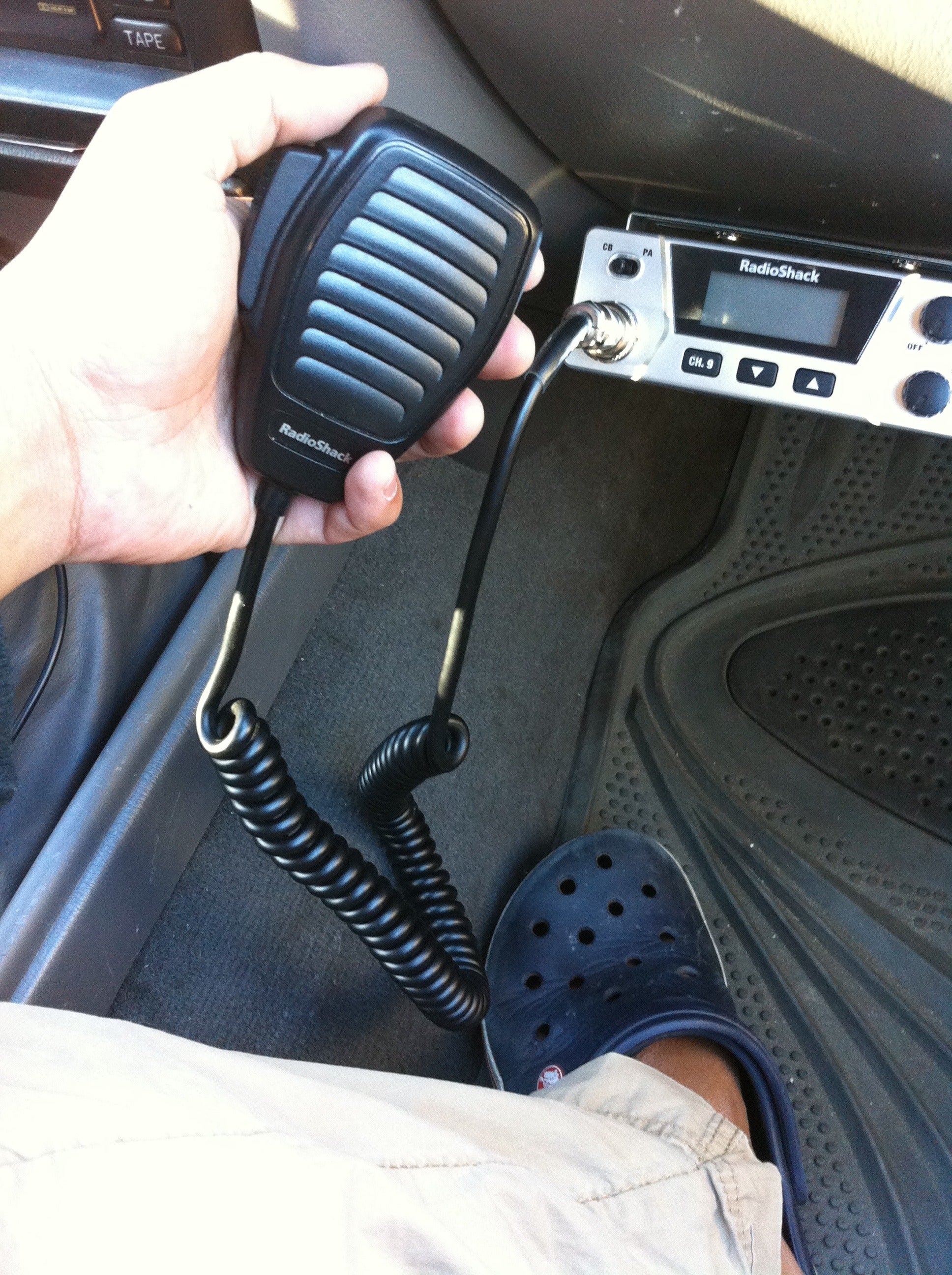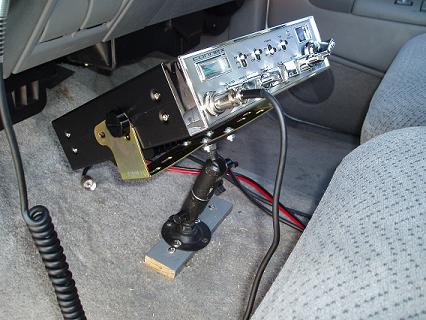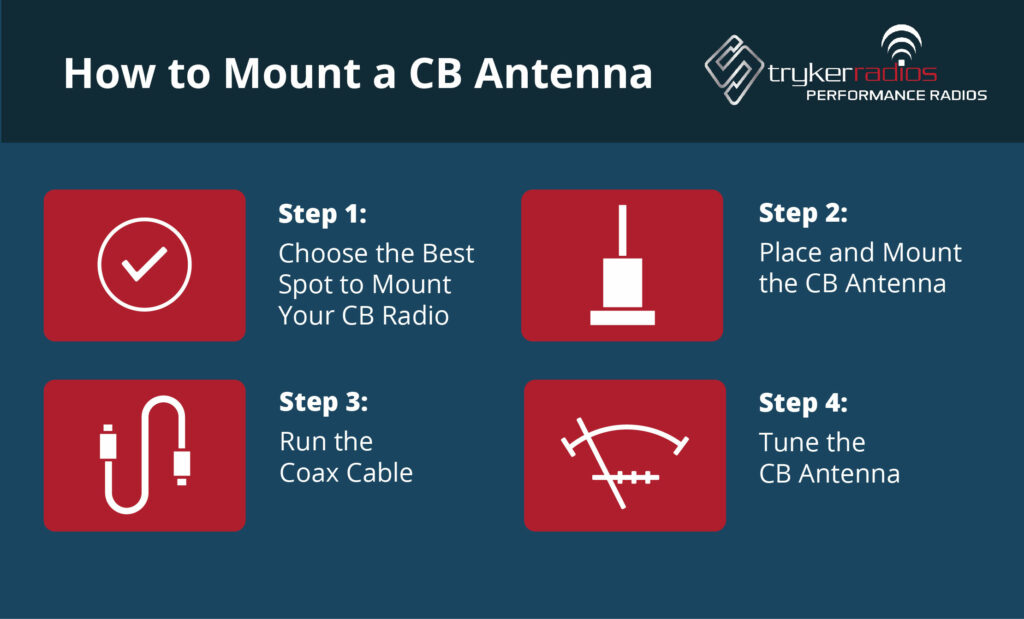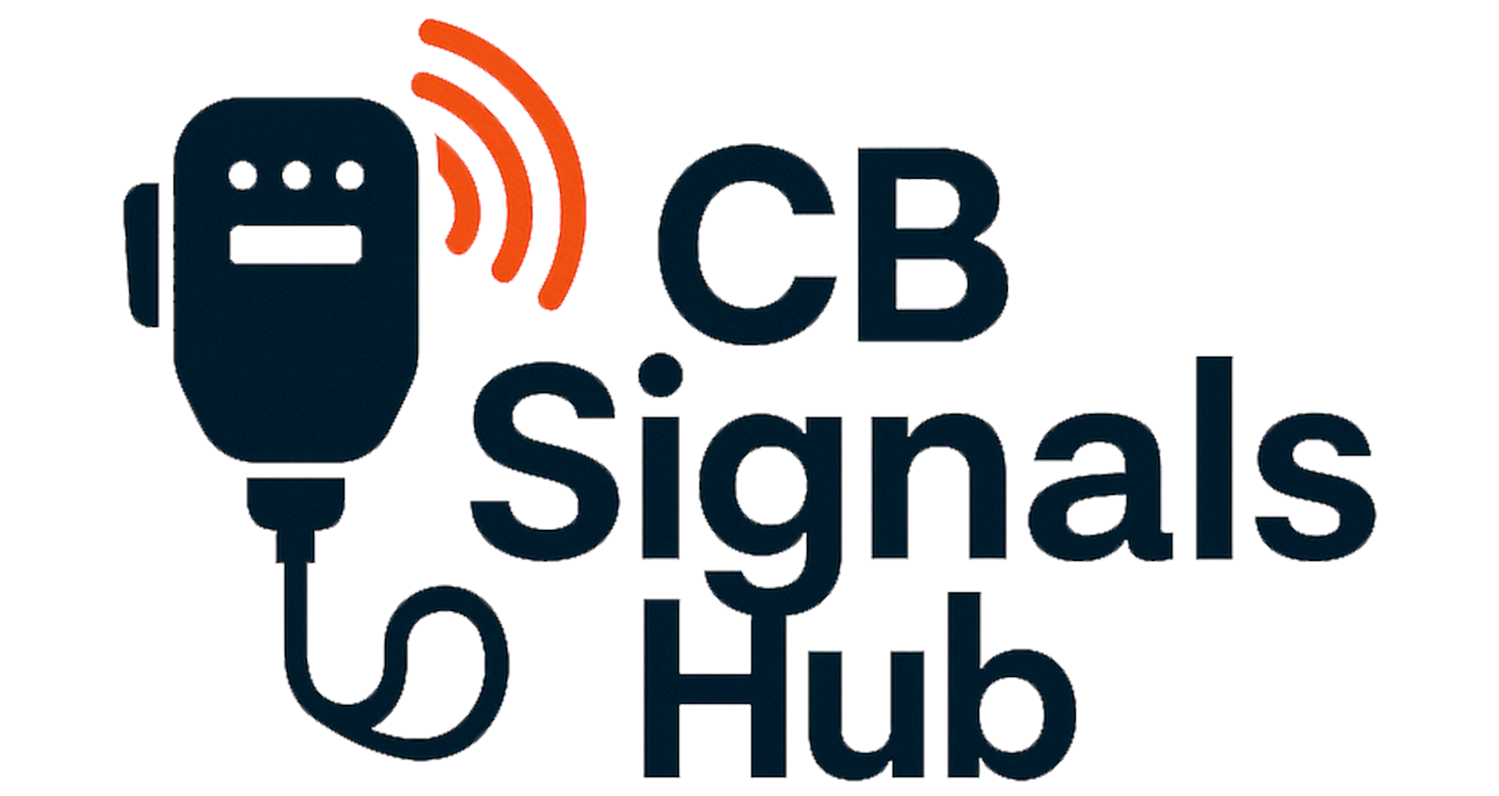How to Mount CB Radio: Step-by-Step Guide for Beginners

Mounting a CB radio is straightforward if you follow the right steps. First, choose the best location for it in your vehicle.
This guide will show you how to mount a CB radio easily. CB radios are essential tools for communication on the road. Whether you’re a truck driver or a hobbyist, having a well-mounted CB radio ensures clear and effective communication.
Mounting a CB radio may seem challenging, but it doesn’t have to be. With the right tools and a bit of patience, you can do it yourself. This blog will walk you through each step, ensuring your CB radio is securely and properly installed. Let’s get started on making your road trips more connected and safe.
Introduction To CB Radios
Mounting a CB radio in your vehicle can seem like a daunting task, but with a bit of guidance, it becomes a manageable project. A well-mounted CB radio not only enhances your communication capabilities but also ensures safety on the road. This article will introduce you to CB radios, detailing what they are and the benefits of using them.
What Is A CB Radio?
CB radio stands for Citizens Band radio. It is a short-distance radio communication system used by individuals for personal or business communication. Unlike other radio services, you don’t need a license to operate a CB radio.
These radios use 40 channels within the 27 MHz band. They have been around for decades and are popular among truckers, off-road enthusiasts, and hobbyists. The simplicity and reliability of CB radios make them an excellent communication tool.
Benefits Of Using A CB Radio
One of the main benefits of using a CB radio is its reliability. Unlike cell phones, CB radios don’t rely on a network signal, making them perfect for remote areas. This can be crucial when you’re off-roading or traveling through areas with poor cell coverage.
CB radios also enhance safety. In emergencies, you can quickly reach out for help. For instance, truckers use CB radios to communicate road conditions, traffic jams, and accidents, helping each other avoid potential hazards. This real-time information can be incredibly useful.
Moreover, using a CB radio can be a great way to join a community. Many enthusiasts use specific channels to chat, share tips, and exchange experiences. It’s a unique way to connect with like-minded individuals.
Mounting your CB radio correctly ensures it’s within easy reach and works efficiently. So, let’s dive into the practical steps of mounting your CB radio.

Credit: cbradiomagazine.com
Choosing The Right Cb Radio
Choosing the right CB radio is crucial for clear and reliable communication. With so many options available, it can feel overwhelming. This section will help you navigate through the choices and find the perfect CB radio for your needs.
Types Of Cb Radios
There are different types of CB radios. Handheld CB radios are portable and battery-operated. These are great for short trips and emergencies. Mobile CB radios are mounted in vehicles and offer more power. These are ideal for regular communication on the road. Base station CB radios are larger and designed for fixed locations. They are perfect for home or office use.
Features To Look For
Consider key features when choosing a CB radio. Look for radios with a good range. This ensures you can communicate over long distances. Check for a weather alert feature. It keeps you informed about severe weather conditions. Noise-canceling microphones are important. They reduce background noise and improve clarity. Look for CB radios with multiple channels. More channels mean less interference and clearer communication.
Essential Tools And Materials
Mounting a CB radio requires basic tools like screwdrivers, wrenches, and power drills. Essential materials include mounting brackets, power cables, and an antenna.
Mounting a CB radio in your vehicle can enhance your communication capabilities, especially during long road trips or off-road adventures. To get started, you’ll need certain tools and materials to ensure a smooth installation process. Below, we’ll break down the essential tools and materials required for mounting a CB radio, along with some additional accessories that can make the installation easier and more efficient.
Required Tools
When mounting a CB radio, having the right tools is crucial. You don’t want to be halfway through the installation only to realize you’re missing something essential. Here are the must-have tools:
- Screwdrivers: Both Phillips and flat-head screwdrivers are necessary for removing panels and securing the radio.
- Drill and Bits: A drill with various bits will help create mounting holes and secure brackets.
- Wire Strippers: You’ll need these to prepare your wires for connection to the power supply and antenna.
- Multimeter: This tool is essential for checking voltage and ensuring proper electrical connections.
Having these tools handy will make your installation process smoother and prevent unnecessary trips to the hardware store.
Additional Accessories
Beyond the basic tools, there are some additional accessories that can make your CB radio installation more efficient and professional:
- Mounting Brackets: High-quality brackets will keep your CB radio secure and prevent vibrations while driving.
- Coaxial Cable: A good coaxial cable is essential for connecting your CB radio to the antenna without signal loss.
- Power Cable: Ensure you have a durable power cable to connect your radio to the vehicle’s electrical system.
- Antenna: Choose an antenna that suits your needs, whether it’s for long-distance communication or local use.
Why invest in these accessories? They not only improve the functionality of your CB radio but also enhance the overall installation experience.
Think about your last DIY project. Did having the right tools and accessories make a difference?
Installing a CB radio is no different. The right tools and accessories can make the process straightforward and enjoyable. Plus, a well-installed radio will serve you better on your journeys.
What tools have you found indispensable for your projects? Share your thoughts in the comments below!
Finding The Perfect Location
Choosing the right spot for mounting your CB radio ensures clear communication and easy access. Position the radio within reach, avoiding obstructions. This setup enhances your driving experience.
Finding the perfect location to mount your CB radio can be a game-changer. It’s not just about convenience—it’s about ensuring your radio is secure and functional. The right spot will enhance your communication experience, making your drives safer and more enjoyable. Let’s dive into the key considerations for selecting this ideal location.
Vehicle Interior Considerations
First, take a good look at your vehicle’s interior. Different cars, trucks, and SUVs have varying layouts, which will influence your mounting options.
Consider the dashboard, center console, and under the seat areas. Each spot has its pros and cons. For example, the dashboard is great for visibility but can be tricky due to airbag placement.
Think about how the radio will fit with your existing controls and features. You don’t want the radio to block important buttons or vents.
Accessibility And Safety
Accessibility is crucial. You want the radio within easy reach so you can operate it without taking your eyes off the road.
Consider mounting it where you can easily see the screen and access the controls. This reduces distractions and helps you stay focused on driving.
Safety is paramount. Ensure the radio is securely mounted to prevent it from becoming a projectile in case of sudden stops. Use brackets and screws designed for your vehicle and radio model.
Personal story: I once mounted my CB radio too close to the gear shift, which made it awkward to change gears. Moving it to a more accessible spot on the center console made a world of difference.
Where will you mount your CB radio for the best blend of accessibility and safety? Share your thoughts in the comments below!
Mounting The CB Radio
Mounting a CB radio in your vehicle can seem like a daunting task, but it doesn’t have to be. With the right tools and a bit of patience, you can have your CB radio securely mounted and ready for use. Whether you’re a truck driver, off-road enthusiast, or just someone who likes to stay connected, this guide will help you through the process.
Preparing The Mounting Bracket
First, gather all the necessary tools: a drill, screwdriver, and the mounting bracket that came with your CB radio. Double-check you have all the screws and bolts needed for the installation.
Next, choose a location in your vehicle. Ideally, this should be somewhere within easy reach but not obstructing any controls. Common spots include under the dashboard or on the center console.
Once you’ve selected your location, hold the mounting bracket in place and mark the spots where you will need to drill holes. Make sure the bracket is level and straight. Drilling small pilot holes can help ensure your screws go in easily.
Securing The Radio Unit
With your bracket securely in place, it’s time to attach the CB radio. Slide the radio unit into the bracket and align the mounting holes on the side of the radio with those on the bracket.
Use the screws provided to secure the radio to the bracket. Tighten them just enough to hold the radio in place without over-tightening, which could damage the unit.
Finally, connect the power wires and antenna cable to your CB radio. Make sure all connections are secure to avoid any loose wires or poor signal reception.
And there you have it! Your CB radio is now securely mounted and ready for use. Did you find a unique spot for your radio that worked better for you? Share your experience and tips in the comments below!
Connecting The Power Source
Connecting the power source for your CB radio is essential for proper operation. First, locate a stable 12-volt power supply. Then, ensure the connection is secure and properly grounded.
Connecting the power source of your CB radio is a crucial step in getting your device up and running. There are a few methods to ensure a reliable power connection. Let’s explore the two common ways: direct to battery and using the fuse box.
Direct To Battery
Connecting your CB radio directly to the battery is a popular and straightforward method. It ensures a steady power supply, minimizing interference from other electrical components.
Begin by identifying the positive and negative terminals on your battery. Always double-check to avoid any mishaps.
Use an inline fuse on the positive wire to protect your radio from power surges. This small addition can save your equipment from damage.
Secure the wires with zip ties or clamps. A tidy setup prevents accidental disconnections and keeps everything in place.
Using The Fuse Box
Connecting to the fuse box is another reliable option, especially if you prefer a cleaner installation without running wires directly to the battery.
Locate an unused fuse slot or one that powers a non-essential system. This ensures your radio doesn’t drain the battery unnecessarily.
Use a fuse tap to connect your radio. This device makes it easy to add a new circuit without cutting or splicing wires.
Ensure the connection is secure and test your radio. A proper setup should provide a consistent power supply.
Which method works best for you? Consider your vehicle’s setup and your comfort level with wiring. Both methods have their advantages, so choose the one that suits your needs best.
Antenna Installation
Installing a CB radio antenna is crucial for clear communication. This guide will help you understand how to choose and mount the right antenna for your CB radio.
Choosing The Right Antenna
The right antenna improves signal quality and range. There are various types of antennas available, such as whip, fiberglass, and magnetic mount antennas. Consider the size, material, and mounting location when selecting your antenna. Whip antennas are long and flexible, fiberglass antennas are durable, and magnetic mount antennas are easy to install.
Mounting And Positioning
Mounting the antenna correctly is essential for optimal performance. First, find a suitable location on your vehicle. The best spots are usually on the roof, trunk, or bumper. Ensure that the chosen location is away from obstructions and has a clear line of sight.
Next, securely attach the antenna mount. This can be done using brackets, screws, or magnetic mounts. Make sure the mount is stable and does not wobble. Position the antenna vertically for the best signal reception. Adjust the height if necessary to avoid hitting low-hanging objects.
Lastly, check the antenna’s connection to the radio. Ensure the cable is properly connected and not pinched. A secure connection ensures uninterrupted communication.

Credit: www.youtube.com
Tuning And Testing
Proper tuning and testing ensure optimal performance when mounting a CB radio. Adjust the antenna for clear signal reception. Test the radio by communicating with others to verify functionality.
Mounting your CB radio is just the beginning. Tuning and testing ensure your setup works perfectly, delivering clear communication. Let’s dive into the essential steps: using an SWR meter and signal testing and adjustments.
Swr Meter Usage
Using an SWR (Standing Wave Ratio) meter is crucial for tuning your CB radio. First, connect the SWR meter between the CB radio and the antenna. Ensure all connections are tight.
Next, set your CB radio to channel 1 and key the microphone. Note the SWR reading. Repeat this step on channel 40. Ideally, both readings should be below 2.0. If not, adjust your antenna length until you achieve the desired SWR levels.
An SWR of 1:1 is perfect but hard to achieve. Aim for anything below 2:1 to ensure good performance. High SWR can damage your radio, so it’s essential to get this right.
Signal Testing And Adjustments
Signal testing is the next step. After tuning, you need to check your radio’s signal strength. Find a friend with a CB radio or use a known signal source.
Communicate with them and check for clarity. If the signal is weak or unclear, there might be interference or your antenna might need further adjustment.
Adjust the squelch knob to eliminate background noise. Fine-tune the RF gain for better reception.
Regular testing keeps your CB radio in top condition. Engage with fellow CB users and ask for feedback on your signal. This ensures you stay connected, especially in emergencies.
Have you ever faced challenges while tuning your CB radio? Share your experiences to help others learn and improve their setups.
Maintenance Tips
Mounting a CB radio correctly ensures better performance and safety. Secure it on a sturdy surface within easy reach. Always follow the manufacturer’s instructions for optimal results.
Mounting a CB radio is just the first step to enjoying seamless communication during your travels. Maintenance is key to ensure your radio works perfectly every time you need it. Here are some practical tips to keep your CB radio in top shape.
Routine Checks
Performing routine checks on your CB radio can save you from unexpected issues on the road. Start by inspecting the antenna. Make sure it’s securely mounted and free from any damage. A loose or broken antenna can lead to poor signal reception.
Check the cables for wear and tear. Ensure they are properly connected and not frayed. You don’t want a faulty cable ruining your communication.
Test the microphone and speaker. Speak into the microphone and listen to the output. If you notice any distortion, it might be time to replace them.
Troubleshooting Common Issues
Sometimes, despite your best efforts, issues can arise. Knowing how to troubleshoot common problems can save you time and frustration.
If your radio isn’t turning on, check the power connections. Ensure the radio is properly plugged into the power source. Sometimes, the issue could be as simple as a blown fuse.
If you’re experiencing poor reception, the issue might be with the antenna. Try adjusting or repositioning it. You can also check the SWR (Standing Wave Ratio) to ensure optimal performance.
In case of distorted audio, check the microphone and speaker connections. Cleaning the microphone can sometimes solve the problem.
Maintaining your CB radio involves regular checks and knowing how to troubleshoot common issues. What’s your routine for keeping your radio in top shape? Share your tips in the comments!

Credit: strykerradios.com
Frequently Asked Questions
Where Should I Mount My Cb Radio?
Mount your CB radio on the dashboard, center console, or under the dash. Ensure easy access and visibility.
Are Cb Radios Hard To Install?
Installing CB radios is generally straightforward. Basic tools and instructions are usually enough for most setups. Antenna placement is crucial for optimal performance. Beginners might need a bit of guidance, but online tutorials can help. Professional installation is available for complex configurations or vehicles.
Does Cb Radio Need Line Of Sight?
Yes, CB radio typically needs line of sight for the best signal. Obstacles can weaken or block communication.
Does A Cb Antenna Have To Be Mounted On Metal?
No, a CB antenna does not have to be mounted on metal. However, mounting on metal improves performance and grounding.
Conclusion
Mounting a CB radio doesn’t have to be difficult. Start with the right tools. Follow the steps carefully. Choose a good location in your vehicle. Secure the radio tightly to avoid movement. Connect all wires safely to power and antenna.
Test the radio before hitting the road. Make adjustments if needed for clear communication. Enjoy improved connectivity on your trips. A well-mounted CB radio enhances your driving experience. Stay safe and enjoy your journey with better communication. Now, you’re ready to explore with confidence.
